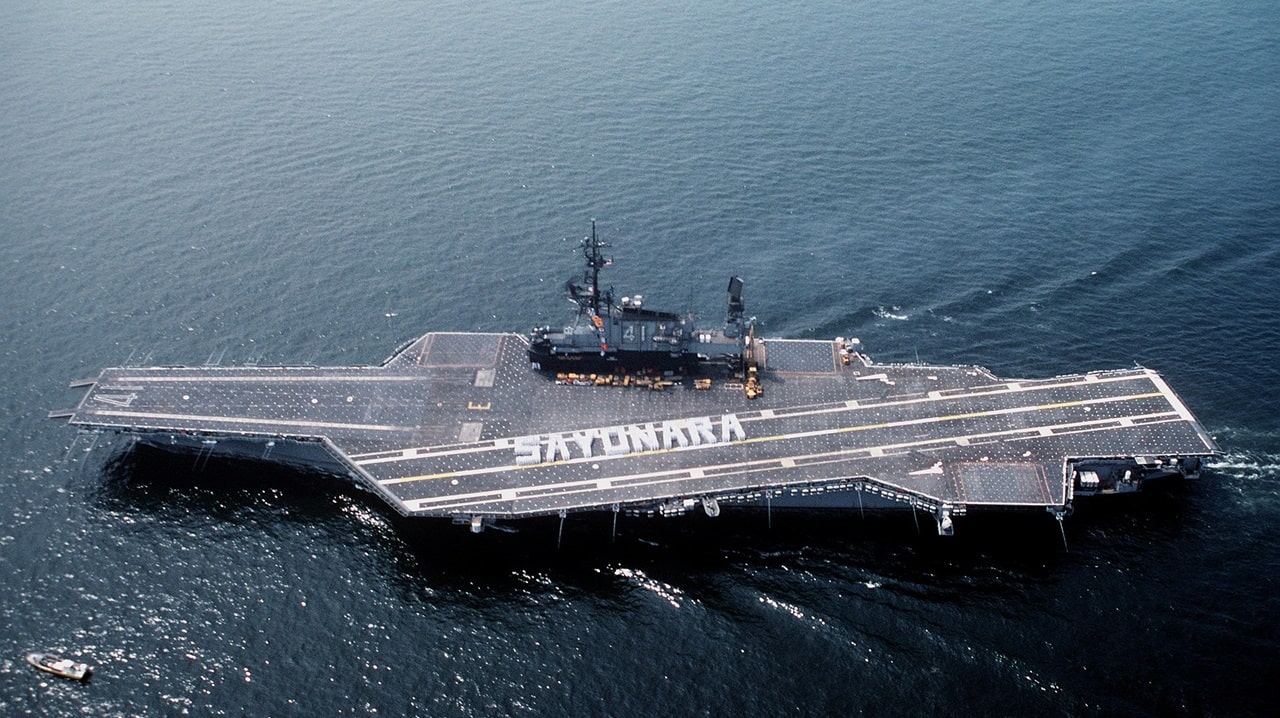Midway-Class: One the U.S. Navy's Best Aircraft Carriers Ever
Armed with these guiding principles as well as sections of unbuilt Montana class battleships – a larger version of the Iowa class that was never completed – Newport News and the New York Naval Shipyard began construction of the Midway-class vessels in 1943.
Meet the Midway-Class Aircraft Carrier: As the U.S. Navy tangled with the Imperial Japanese Navy in the Pacific during the Second World War, the era of carrier dominance was truly established. Navy planners recognized that the new Essex class carriers, while capable, could be improved. The process of designing a new carrier resulted in the USS Midway, the first in her class and the predecessor to the supercarriers of today.
HMS Illustrious and USS Franklin
While the Essex carriers were based primarily on design principles that were unrestricted by binding treaties and gleaned from using the Yorktown vessels during peacetime operations, naval architects who planned the Midway were able to use real-world combat examples from some of the early engagements of WWII.
In January of 1941, the HMS Illustrious was operating in the Mediterranean to provide air cover for Allied convoys. Around noon on the 7th, she was attacked by several squadrons of German dive bombers, sustaining substantial damage. While the attack failed to sink the carrier, it highlighted several vulnerabilities. Most pressing to U.S. designers was the massive fire that swept the entire hangar deck when a bomb penetrated the flight deck, destroying many aircraft parked within.
Similar circumstances were encountered aboard the USS Franklin, an Essex-class carrier serving in the Pacific. In two separate incidents, the Franklin suffered serious damage; the first on October 30, 1944, when a kamikaze bomber crashed through her flight deck, the second on March 19, 1945, when a Japanese dive bomber dropped two bombs through her flight deck resulting in massive damage and loss of life. Only heroic efforts by crewmembers saved the ship.
Studies of the battle damage that occurred to these two ships led naval architects to two important conclusions. The first was the necessity of armoring the flight deck. Essex class carriers had an armored hangar deck, however, British carriers with armored flight decks fared much better against bombs which often failed to penetrate and detonate in the hangar. The second was the idea of sectioning off the hangar bay to prevent fires from spreading throughout the entire deck.
Meet the Midway-Class
Armed with these guiding principles as well as sections of unbuilt Montana class battleships – a larger version of the Iowa class that was never completed – Newport News and the New York Naval Shipyard began construction of the Midway-class vessels in 1943.
These carriers, designated CVB for Large Carrier, would be far larger than the Essex-class currently serving at nearly 100 feet longer overall and displacing nearly twice as many tons. The size increase was necessary to accommodate an armored flight deck without compromising on aircraft-carrying capability. In fact, the Midway-class was originally designed to field 130 aircraft compared to the 90 on an Essex-class.

Ultimately, strategists realized this number of aircraft was unworkable; it was nearly impossible to coordinate that many aircraft effectively, and launch and land cycle times would be enormous. This problem was compounded by the fact that the original design was a “straight deck,” which did not allow for simultaneous launch and recovery.
The hangar deck remained the “strength deck” while the flight deck was technically superstructure added on top. The fact that the flight deck was armored increased the center of gravity and made the ships rather unwieldy. They were known for both rolling heavily in turns and taking on seas when the weather was rough. Later carriers were designed entirely around the flight deck with a much deeper hull ameliorating these tendencies.
In Service
Despite being designed for the Second World War, none were commissioned in time to see service in that conflict. All three ships had illustrious careers nonetheless and proved important to advancing naval tactics and aviation.
All three ships in the class were participants in the rapidly progressing technological arms race. In 1946, the Franklin D. Roosevelt successfully launched and recovered an XF-1 Phantom multiple times, the first time the U.S. Navy operated a jet in a carrier environment. The following year, the Midway launched a V2 rocket from her flight deck while in motion, ushering in the era of seaborne missile systems. Finally, in 1950, the Coral Sea participated in trials with AJ-1 Savage bombers to prove the feasibility of launching nuclear-armed aircraft from carriers.
These successes were bolstered by the carriers’ continuing relevance through the Cold War. Their massive size, which originally proved unworkable for a large air wing, turned into an advantage as they were easily able to accommodate the larger and faster jet aircraft of the modernizing navy. A refit program in the 1950s installed angled decks, greatly increasing the survivability of carrier landings while making flight operations far more efficient.
Maya Carlin is an analyst with the Center for Security Policy and a former Anna Sobol Levy Fellow at IDC Herzliya in Israel. She has by-lines in many publications, including The National Interest, Jerusalem Post, and Times of Israel. You can follow her on Twitter: @MayaCarlin.
Image Credit: All Images are WikiCommons.

